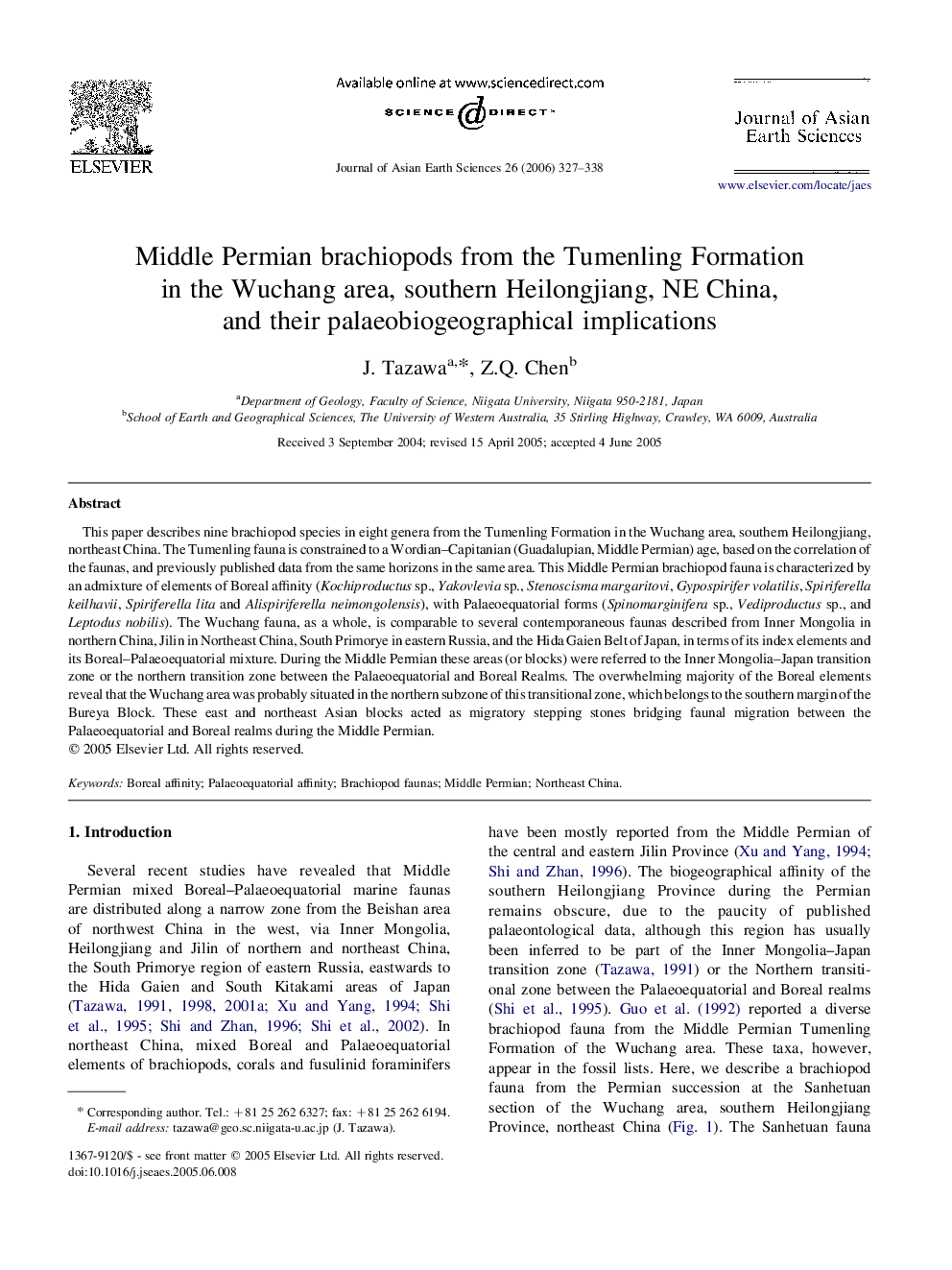| Article ID | Journal | Published Year | Pages | File Type |
|---|---|---|---|---|
| 4732612 | Journal of Asian Earth Sciences | 2006 | 12 Pages |
This paper describes nine brachiopod species in eight genera from the Tumenling Formation in the Wuchang area, southern Heilongjiang, northeast China. The Tumenling fauna is constrained to a Wordian–Capitanian (Guadalupian, Middle Permian) age, based on the correlation of the faunas, and previously published data from the same horizons in the same area. This Middle Permian brachiopod fauna is characterized by an admixture of elements of Boreal affinity (Kochiproductus sp., Yakovlevia sp., Stenoscisma margaritovi, Gypospirifer volatilis, Spiriferella keilhavii, Spiriferella lita and Alispiriferella neimongolensis), with Palaeoequatorial forms (Spinomarginifera sp., Vediproductus sp., and Leptodus nobilis). The Wuchang fauna, as a whole, is comparable to several contemporaneous faunas described from Inner Mongolia in northern China, Jilin in Northeast China, South Primorye in eastern Russia, and the Hida Gaien Belt of Japan, in terms of its index elements and its Boreal–Palaeoequatorial mixture. During the Middle Permian these areas (or blocks) were referred to the Inner Mongolia–Japan transition zone or the northern transition zone between the Palaeoequatorial and Boreal Realms. The overwhelming majority of the Boreal elements reveal that the Wuchang area was probably situated in the northern subzone of this transitional zone, which belongs to the southern margin of the Bureya Block. These east and northeast Asian blocks acted as migratory stepping stones bridging faunal migration between the Palaeoequatorial and Boreal realms during the Middle Permian.
